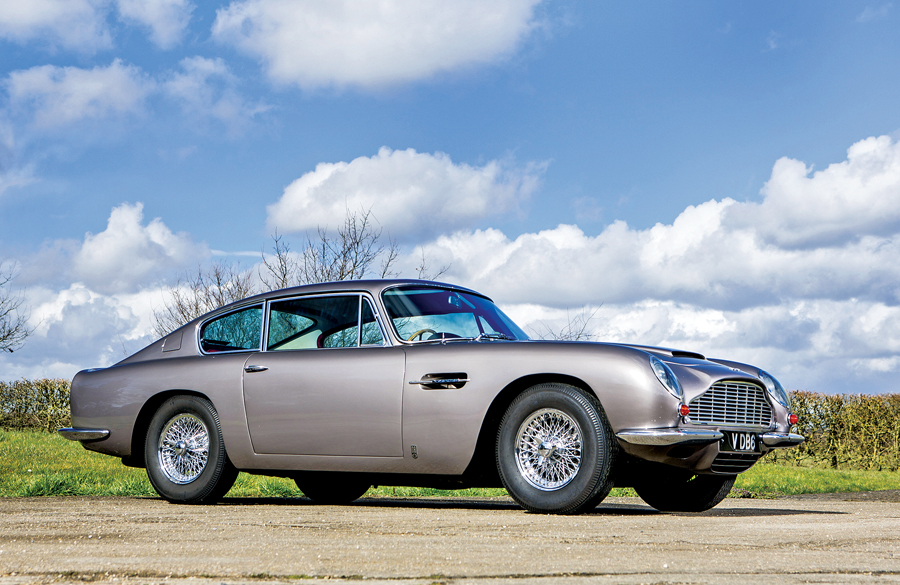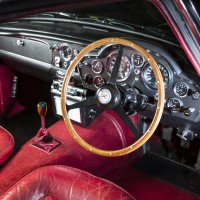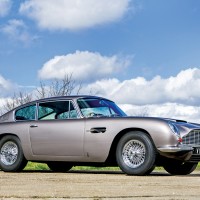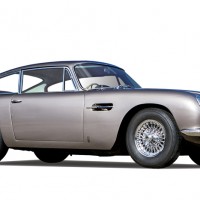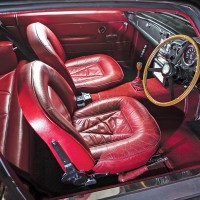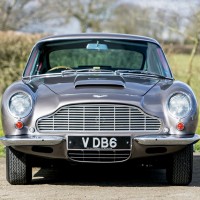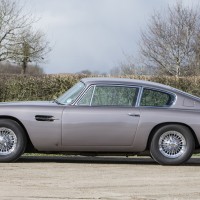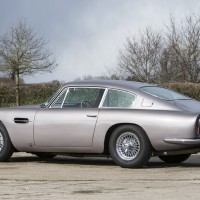SCM Analysis
Detailing
| Vehicle: | 1969 Aston Martin DB6 Mk I Vantage Sports Saloon |
| Years Produced: | 1966–71 |
| Number Produced: | 1,728 Mk Is, 239 Mk IIs |
| Original List Price: | $16,000 |
| SCM Valuation: | $340,000–$475,000 |
| Tune Up Cost: | $1,000 |
| Distributor Caps: | $114 (from Aston Workshop Parts). Genuine NOS £150 ($230) |
| Chassis Number Location: | Engine compartment on right side |
| Engine Number Location: | Stamped on right side of block |
| Club Info: | Aston Martin Owners’ Club, PO Box 400 Drayton St. Leonard, Oxfordshire OX10 7BG tel: 01865 400400 |
| Website: | http://www.amoc.org/ |
| Alternatives: | 1963–65 Aston Martin DB5 Vantage, 1966–68 Ferrari 330 GTC, 1966–67 Jaguar E-type 2 2 coupe |
This car, Lot 217, sold for $757,446, including buyer’s premium, at Bonhams’ annual sale of Aston Martins at Aston Martin Works, Newport Pagnell, U.K., on May 9, 2015.
The DB6 has finally caught up to where DB5s were five years ago — probably pulled up by the older car taking another huge leap in the past 12 months to settle in the £650k–£750k ($1m–$1.15m) range.
Coincidentally, both Bonhams and H&H sold Mk II automatics less than $3,000 apart at sales separated by only three weeks. There were roughly twice as many DB6s built as DB5s, which will always suppress prices, but the market likes Mk IIs for their power steering. The choice of transmission doesn’t appear to affect the value much, although when push comes to shove, the 5-speed manual will always just shade it.
However, our subject car raised almost $160k more than either of the cars above. What’s going on here? What made this Mk I worth so much?
Low mileage, great history and a splendid interior, basically.
While both of the Mk IIs were well kept and well presented, this 15,000-miler was notably fresher, its completely original leather glowing with a vitality that re-trims just can’t replicate — however hard they try to emulate that original Aston Martin feel. An aura that was created right here at Newport Pagnell, lest we forget.
Why good, original cars are best
Our subject car is a working explanation, a visual lesson, if you will, of why originality is so highly prized. The 32-year-old paint was holding up well, there were only one or two tiny blemishes in the chrome and, rounding off the package, it still stood on the correct, tall Avon tires, which should please the trainspotters among us. Period-correct rubber is an essential detail for the right stance, but one that’s easy to overlook and which grates horribly when it’s wrong. Low-profiles just aren’t the thing on these.
All this tells us the car was looked after by owners who care. Restoring any of the David Brown-era cars costs just about the money paid here. DB6 values aren’t yet high enough to support a full restoration, so it’s essential to buy a nice, no-needs car to avoid going underwater. This was it.
The original owner, Mr. Parry, not only ordered his car to the enhanced Vantage specification, but he appears to have been an enthusiast with Astons in his blood, as records and photographs on file showed that his father owned Astons pre-war, while a friend had a DB5. In the boot (trunk) was a box of cleaning equipment still bearing Mr. Parry’s name and address. In 1977, he found that the registration VDB 6, eminently suitable for a DB6 Vantage, was available so it was changed over from the original KEY 240G.
When Mr. Parry sold the car in 1983, the only mechanical work suggested by the factory was a 10,000-mile service, which the car had just reached. But the new owner also decided on a complete repaint at Newport Pagnell in the original Dark Oyster — and the replacement of all rubber components.
Since then, the Aston has covered only another 5,000 or so miles, during which time it’s been maintained by the factory and more recently by Goldsmith & Young, whose principal, John Goldsmith, is chairman of the AMOC. G&Y has rebuilt the suspension with harder springs all round, telescopic shock absorbers at the rear and an improved front anti-roll bar, and also rebuilt the cylinder head with larger valves and unleaded-tolerant seats, while resisting the usual temptation to punch the motor out to 4.2 liters at the same time.
Low miles, great shape and gorgeous
So let’s recap. Aside from not being a Mk II (and I, for one, think the flared arches of the late cars have not aged well), it was the most desirable model, and if not factory-original, it was the next best thing, with the paint applied in the same place that built the car.
It was a Vantage, with a manual shift. Its lines were unsullied by a sliding sunroof, which were popular when the cars were new but jar today. It had only covered a tiny mileage (15,258), and cradled an eye-poppingly, mouth-wateringly luscious interior that transported you right back to the old days. And it sported a great number plate too!
No wonder someone thought it was worth $150k over the odds, arriving $100k north of even Bonhams’ high estimate, after some agonizingly protracted bidding in indulgently small increments of £1,000. Well sold — and full marks to auctioneer Jamie Knight for his patience, which paid off — but also creatively bought. ♦
(Introductory description courtesy of Bonhams.)
